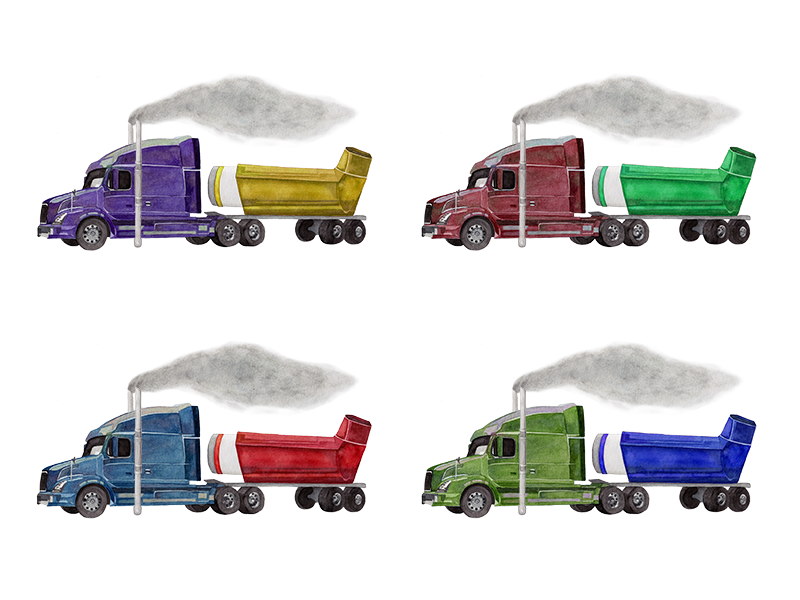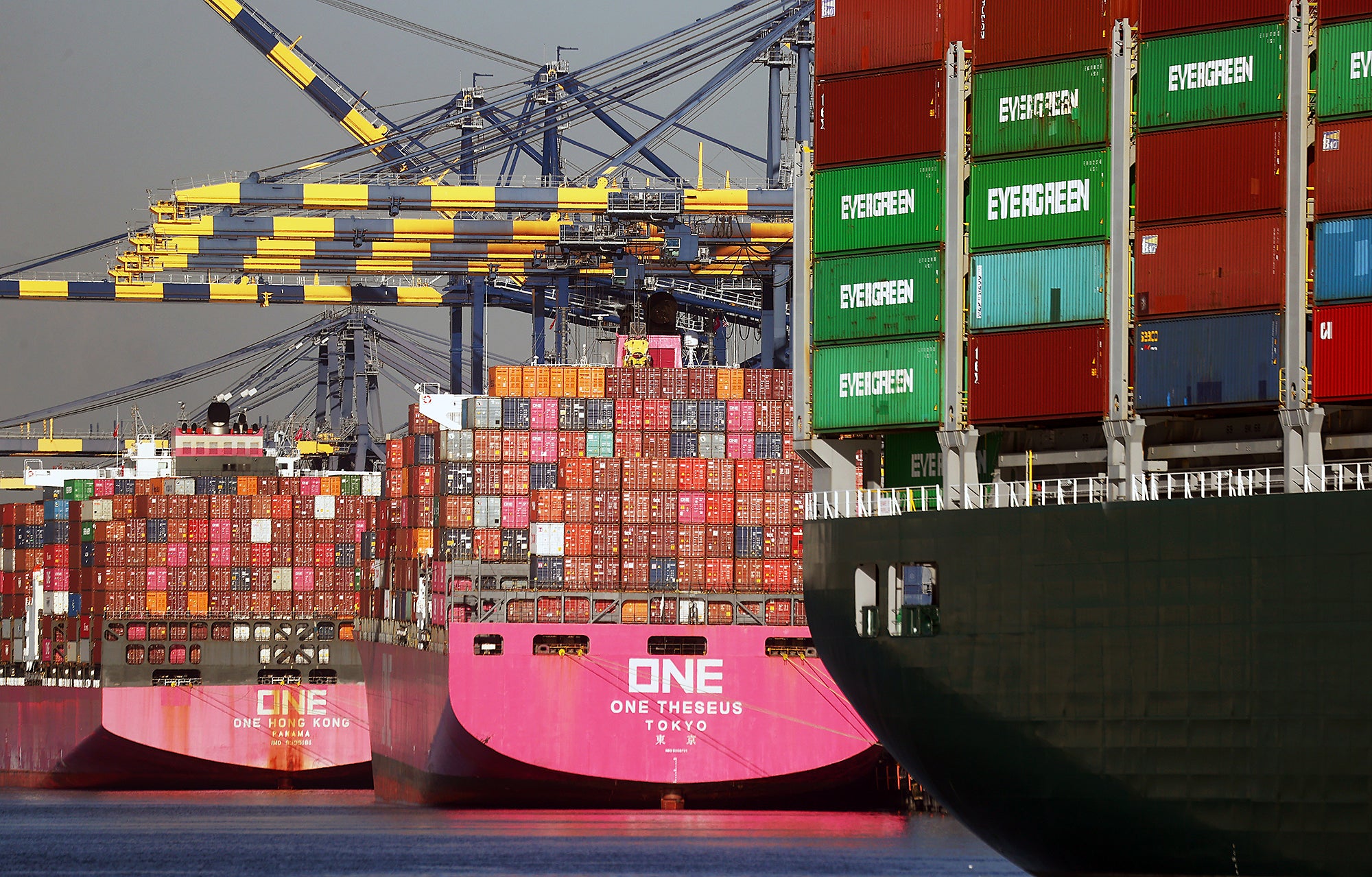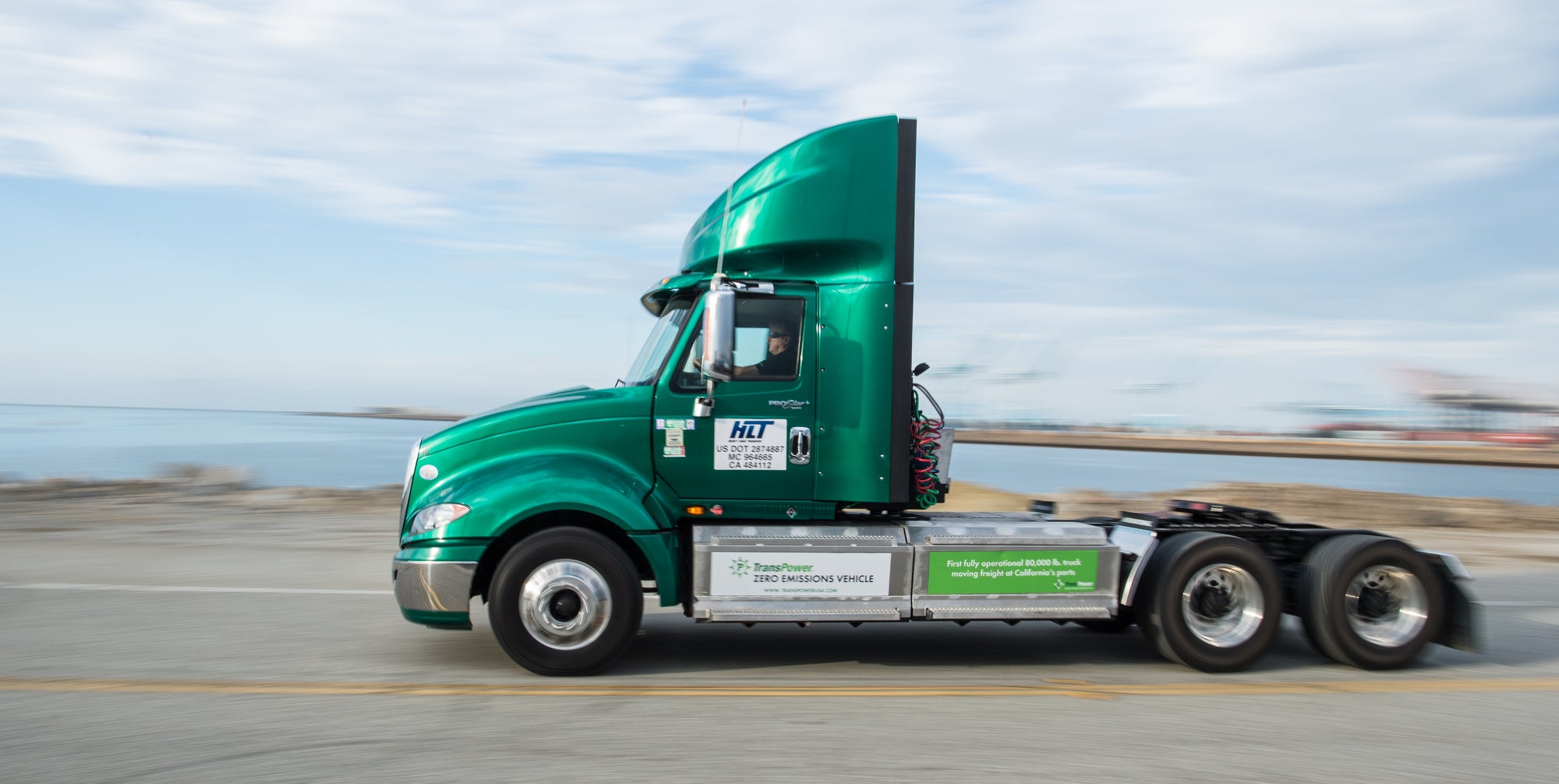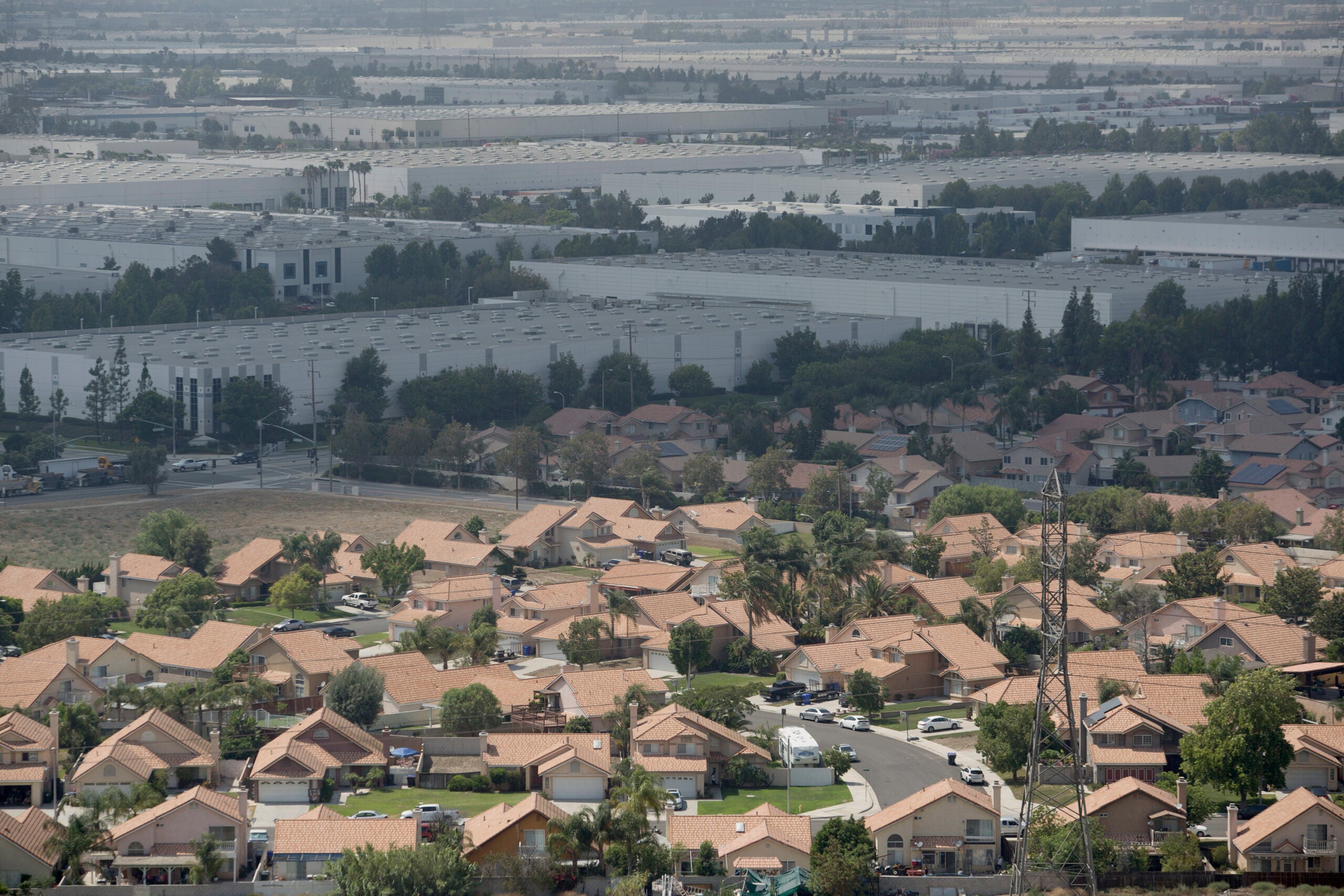California Reins in Its Smoggy Warehouse Problem
A new approach to mega warehouse pollution is showing early success in the fight against diesel pollution. Everyone should be talking about Indirect Source Rules.
As you may have noticed, e-commerce is growing like crazy — and along with it, the massive warehouse and transportation infrastructure to move all those packages. Southern California has been hit especially hard by this boom, with the colossal Ports of LA and Los Angeles handling about half of the goods that come into the U.S. from Asia. So in 2021 as Californians squinted through the smog and picked up their next asthma inhaler, the region’s Air District did something smart: it shaped an innovative, creatively structured new rule to clean up pollution from Southern California’s huge complex of warehouses.

(Hannah Rothstein for Earthjustice)
A warehouse itself doesn’t pollute, of course — it’s just a building. But the fleets of diesel trucks that carry goods to and from warehouses and move them around the building and its grounds do pollute. And the diesel pumped out into neighborhoods by the tailpipes of the goods movement industry is especially damaging to human health. That makes each warehouse an indirect source of pollution.
The new regulation, called the Warehouse Indirect Source Rule, was designed to address this massive and growing pollution burden — ozone, nitrogen oxides, and diesel particulates — indirectly generated by warehouses. These pollutants increase people’s risk of a wide variety of serious health problems, including damage to airways, heart attacks, cancer, and even premature death.
For a sense of scale, Southern California’s warehouse complex has been growing at the rate of about 175 million square feet per decade since the 1980s, when imports from China into the Ports of Los Angeles and Long Beach started to boom. The recent surge in e-commerce has jump-started another massive wave of expansion. In just the Inland Empire (San Bernardino, Riverside, and surrounding communities) alone, warehouses now cover nearly 37 contiguous square miles. Put another way, that’s enough warehouses to blanket three quarters of the city of San Francisco!

Shipping containers are stacked on container ships at the Port of Los Angeles. (Mario Tama / Getty Images)
An Air District analysis found that traffic to and from these warehouses produce nearly the same amount of nitrogen oxide pollution as all the factories, refineries, and other buildings that emit pollutants in the entire region combined. This nitrogen oxide pollution is a major factor in LA’s notorious smog problem. And of course, all those diesel trucks also belch climate-altering carbon dioxide into the air.
So the Air District, with the strong support of Earthjustice and other environmental and community groups, took action. It created a new program called the Warehouse Actions and Investments to Reduce Emissions program, or WAIRE.
A Menu for Zero Emissions
Instead of dictating to warehouse operators exactly what they must do, WAIRE gives them a menu of choices to pick from, depending on their circumstances and the details of their particular operation. Choices cover the greatest hits of zero-emissions solutions and clean energy. The menu includes acquiring zero-emissions trucks, installing charging infrastructure to service said zero-emissions trucks, installing solar panels, or taking action to mitigate community health harms from truck emissions such as installing air filtration systems in schools and hospitals. For each action they take, warehouse operators earn points toward a required total.
Importantly, facilities earn points not just for acquiring pollution-free equipment but for actually using it, via measures like the number of trips to and from the warehouse by zero-emissions vehicles.
The menu of choices gives operators over 30 different options, and they can also create a custom WAIRE plan, with approval from the Air District. These point requirements are being phased in so as to avoid placing a sudden and unreasonable burden on the businesses, starting with the largest warehouses first.
The new approach is working — and it’s strikingly ahead of schedule. As of May 31, 2024, regulated warehouses earned far more WAIRE points than required to meet the rule’s requirements, which means the rule is achieving more than expected. Some 203 smaller warehouse and facility operators, whose obligations haven’t started yet, have taken actions to cut emissions sooner than they were required to. And, for warehouses that choose not to implement clean air measures, they need to pay a fee, which will go towards clean air projects. There are $28 million in fees that will go to projects that clean up the air.
The Indirect Source Rule is Delivering Clean Air
What does the WAIRE program look like on the ground? The plan set up by Maersk for its facility in South Gate, a neighborhood between the ports and Downtown LA, is a good example. Maersk is electrifying its fleet of drayage trucks that service the South Gate warehouse and another SoCal facility. It already has 38 battery electric trucks and is in the process of increasing that number to 396 by 2026. The company has nearly completed installation of charging stations with a total of 96 charging ports to power those trucks. That’s nearly 400 trucks that won’t be spewing cancer-causing particulates, nitrogen oxides, and other junk into the air of South Gate and neighboring communities as they make regular 15-mile trips between South Gate and Maersk’s other major facility in the region.

An Electric heavy duty truck from TransPower is used to move freight at the Long Beach Port in California. (Dennis Schroeder / NREL)
Even though WAIRE is still in its early phases, it’s already making LA’s air healthier. The Air District estimates that actions taken so far have produced a 3% reduction in nitrogen oxide emissions from over 3,000 regulated warehouses — about two thirds of a ton less NOX in Southern California per day — and have also cut diesel particulate emissions. And this may be an underestimate of the benefits of this regulation.
Fueled by the unbridled expansion of the goods movement system, large warehouses are sprawling in communities across the country and polluting the air breathed by millions. Communities living in the shadow of massive freight hubs in places like New York, New Jersey, and Chicago are feeling the effects. But Southern California’s ambitious Indirect Source Rule is meeting the moment and curbing warehouse pollution with a shift to zero-emissions solutions — and in doing so, lighting the path for other air agencies across the U.S. The new regulation is a key step in ensuring we can move goods in this country without polluting our lungs.
The California Regional Office fights for the rights of all to a healthy environment regardless of where in the state they live; we fight to protect the magnificent natural spaces and wildlife found in California; and we fight to transition California to a zero-emissions future where cars, trucks, buildings, and power plants run on clean energy, not fossil fuels.
